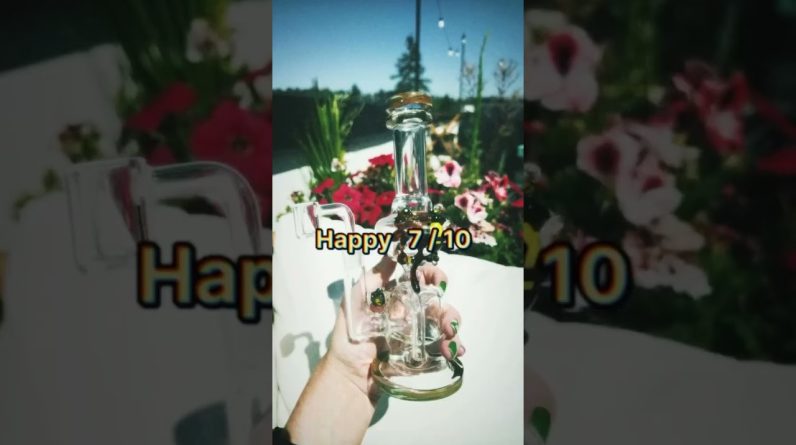By Bernard Garfinkel
The very first thing you discover is the colour, a selected and wonderful translucent inexperienced, the inexperienced of a deep tropical sea, of a primeval planet steaming within the solar, but trendy, too, a glowing neon, a Ferrari inexperienced. It’s, in fact, the colour to which the liqueur Chartreuse gave its title. And, amazingly, the colour of Chartreuse is of its essence. It’s the facility of suggestion, most likely, however there’s no escaping the sensation that it tastes inexperienced, and that is a part of its pleasure. Just like the coral of a boiled lobster shell, the inexperienced of Chartreuse is exclusive; it indicators the liqueur itself, someway telegraphs to the thoughts earlier than the primary sip that spiky, candy, spicy and sophisticated style.
Chartreuse has been referred to as the “greatest liqueur on this planet.” Actually, it’s the most costly, and essentially the most potent as effectively—110 proof, whereas different liqueurs vary from 50 to 96. (There may be additionally a yellow Chartreuse, thought-about by most aficionados to not dwell on the identical degree of pleasure because the inexperienced. Its proof is 86.) This alcoholic energy has, in latest instances, given rise to promoting campaigns extolling its 55-percent spiritous content material in phrases equivalent to “inexperienced fireplace.” Then, too, there’s greater than a touch of the aphrodisiacal in its legend. The key mix of components that mysteriously mix to offer Chartreuse its particular taste and shade has been described as having magical and sexual powers, of being related to historical gods of fertility and want.
But the liqueur is made by a very religious band of monks of the Carthusian order, whose ascetic lifetime of isolation, silence, fasting, chastity and prayer is thought to be essentially the most tough and demanding vocation within the Roman Catholic church. Initially produced as a therapeutic potion, a medication with tonic powers for digestive and different illnesses (a operate it nonetheless serves for some), Chartreuse has grow to be, you would possibly say magically, a therapeutic stream of cash for the monks, whose airtight life-style within the Monastery of La Grande Chartreuse within the hills close to Grenoble in southeastern France is as costly to keep up as that of a yacht-collecting Greek tycoon.
Chartreuse has, in truth, come to symbolize, like Coca-Cola, a enterprise secret of huge worth, and for the reason that latter half of the nineteenth century, when it achieved worldwide industrial success, it has been a frequent goal of business espionage and high-powered chemical evaluation geared toward stealing its well-guarded method or breaking its profitable code. To no avail. Though dozens of imitations—from the Japanese Chartreuse Morozoff to La Princesse des Chartreux— have surfaced once in a while, all of them, just like the imitations of Coke, have failed by a better or lesser measure to duplicate the actual factor.
There’s little doubt that Chartreuse is a extremely advanced compound. It’s constructed from 130 totally different herbs, crops, and spices. Many of those are discovered within the Alpine hills close to the monastery and gathered by native laborers paid by the monks. Others are shipped in from all over the world. Maybe Crick and Watson, the scientists who “cracked” the DNA and RNA molecules, may take Chartreuse aside and label exactly its elements and their proportions. However different scientists have tried and failed. All that they’ve been capable of do is determine among the herbs and crops it comprises.
Frank Schoonmaker, the famend wine skilled, listed the next as “most likely” current in inexperienced Chartreuse: lemon balm, hysopp, peppermint, genepi, angelica seed and root, thyme, balsam, purslane, arnica blossoms, cinnamon and mace. Yellow Chartreuse has a special method, however, Schoonmaker reported, it undoubtedly comprises a excessive proportion of coriander. No different liqueur approaches the complexity of Chartreuse. Benedictine, for instance, comprises 30 herbs and spices, and the Italian liqueur Strega (which suggests “witch”), made by the Benevento household from a secret method for the previous 110 years, has 70 components.
The components in Chartreuse are blended and ready in keeping with the traditional method that was given to the monks in 1605. In keeping with the Carthusians, the donor is unknown however most likely “a French alchemist.” In keeping with one other account he was the Marshal d’Estrees, a good friend of King Henri IV. In any occasion the present was ignored for some 150 years, till Brother Gérôme Maubec, “a intelligent apothecary,” managed after 27 years of experimenting to translate the method for “an natural elixir of lengthy life” right into a consumable potion. Within the ceiling over the six copper stills are trapdoors that open and shut on the whim of the brewmasters. When the monks have completed making ready a batch of herbs, a trapdoor above a nonetheless opens immediately, a pipe descends into the nonetheless, and the herbs cascade down into the vat. Then the pipe is drawn upward once more, there’s a muffled whump because the trapdoor closes, and the key mixing course of continues above. On days of particular spiritual observance on the monastery, the brewmasters don’t seem on the distillery, and if the corporate’s employees haven’t any components from the day gone by within the distilling vats, they busy themselves with different work, or they do nothing.
Chartreuse has been described as having magical and sexual powers related to historical gods of fertility and erotic want.
Maubec’s work was carried on by a fellow monk, Brother Antoine, who produced in 1764 an elixir de desk and an elixir de santé, stronger and darker. The elixir de desk is present-day inexperienced Chartreuse. The elixir de santé continues to be bought in Europe as a tonic (take two or three drops on a lump of sugar), its alcoholic efficiency weighing in at a formidable 136 proof. (This elixir will not be allowed into the US as a result of it’s deemed a “patent drugs.”) A century after Maubec and Antoine, Brother Bruno Jacquet compounded the yellow selection.
Following the perfected formulation, the components for Chartreuse are ready and proportioned in secret methods and, as we will see, in a non-public place from which all however monks are excluded. The flavoring compound is then combined with honey and a brandy base and the end result distilled six totally different instances, throughout which additional components are added.
We must always, at this level, distinguish between brandy, fruit and flavored liqueurs and herb liqueurs equivalent to Chartreuse. Brandy is a distillate of grapes or different fruits. Grape brandy (from wine) is generally often called cognac, after the district in France that produces what is mostly thought to be the world’s greatest. Different fruits give their names to brandies: apples (Calvados), plums (Quetsch or Mirabelle), raspberries (Framboise). Flavored liqueurs are recognized within the commerce as “infusions.” They’re produced by steeping recent fruit in impartial spirits or brandy, then sweetening and filtering the end result, and this course of provides them extra fruit taste than the brandies. Among the many flavoring brokers are mint, espresso beans, anise and numerous fruits—apples, blackberries, cherries and oranges, amongst many others. Lastly, there are the herb liqueurs equivalent to Chartreuse, Strega, Benedictine, Galliano. These are recognized in France as liqueurs jaune (yellow) even once they’re colorless. They’re made by steeping herbs in brandy or spirits, then sweetening, coloring and distilling the outcomes.
In France the natural liqueurs are also known as monastic liqueurs as a result of so a lot of them had been first made at monasteries by spiritual orders. However in the present day Chartreuse is the one liqueur nonetheless made by monks. In distinction, Benedictine, supposedly first made on the Benedictine abbey at Fecamp in France, not has any reference to the order.
Because the guardians of their secret method, the Carthusians are confronted with a serious downside in safety, and their answer would do justice to the CIA. Chartreuse is made at a distillery within the village of Voiron, a couple of miles from Grenoble and the monastery. The key method and Maubec’s translation of it repose in a vault on the monastery.
Entry to the method, as in the very best intelligence organizations, is doled out on a need-to-know foundation. At any given time, solely 5 monks are allowed to know. Three of them are the monks who put together the components on the distillery. The opposite two are the director of the monastery and his assistant. In the very best custom of company and intelligence-agency safety, the 5 males will not be allowed to journey in the identical automobile, and, in truth, even the three monks will not be allowed to experience in the identical automobile over the winding mountain roads from the monastery to the distillery, since they haven’t any “backup males” to do their job. Solely when a monk begins to succeed in what’s estimated to be the previous couple of years of his tenure as a “brewmaster” is a youthful substitute skilled.
On the distillery, high safety is maintained. Whereas Chartreuse is made by the three monks who put together the method, the remainder of the method—distillation, bottling, labeling, advertising and marketing and distribution—is within the fingers of a manufacturing firm with which the Carthusian order is related for this objective, the Campagnie de la Grande Chartreuse. Its staff, evidently, will not be within the know. Consequently, on the distillery there’s a white-painted staircase resulting in the second flooring, and solely the three Carthusian brewmasters mount its steps.
Again on the monastery, the brewmasters pursue precisely the identical silent and solitary life as their fellow monks. The Carthusian order was based in 1084 by St. Bruno on a desolate mountaintop close to Grenoble referred to as Chartreuse (which interprets as “wilderness”). Within the years since, different Carthusian monasteries have been established all through Europe (Stendhal’s Charterhouse of Parma was one), all following St. Bruno’s unique dedication to an hermetical life. A latest report put the current quantity at 26, housing some 800 brothers.
La Grande Chartreuse is the headquarters monastery of the order, and its director is the top of the complete order. At Chartreuse, the 32 monks dwell for essentially the most half remoted from one another in addition to from the surface world. They arrive collectively just for spiritual providers and when teams of 10 or 15 stroll via the countryside. Solely on these woodland walks do the monks converse with one another. Contained in the monastery, they observe their vow of silence. (On the distillery, the monks converse with one another and outsiders when obligatory.) Their cells are on two ranges, the decrease one for work, the higher one for prayer and meditation. In addition to a mattress, the rooms include nothing however an altar, pew, workbench and range. The monks not put on hair shirts, as they as soon as did, however gown in cowled robes of white serge. In the principle they nonetheless observe the traditional order’s strict dietary necessities, by no means consuming meat, fasting on bread and water three days every week, consuming as soon as a day in any other case (besides on feast days). They haven’t any radios, TV or newspapers, nor in truth any contact in any respect with the surface world aside from a short go to from their households as soon as each 5 years.
Their monastery is an in depth cluster of buildings that home, along with monks, lay brothers who handle the home work. It’s surrounded by a 14-foot-high wall, extra to maintain the world out than the monks inside. On a typical day, they retire at seven within the night, get up at two within the morning for meditation and prayer, attend vespers and matins at 9, 12 midday and 4 within the afternoon. In between, they work of their cells, primarily at writing.
This devoted existence is supported in the entire monasteries by the revenue the Carthusians obtain from Chartreuse, which is now regarded to be in extra of $4 million a yr, primarily based on a royalty of near 25 % on every bottle the monks produce.
However even with the beneficence of this revenue, the order has skilled a great deal of travail. In 1903, with the passage of a brand new spiritual legislation in France, the Carthusians had been expelled from the nation, the second time that they had skilled that destiny, the primary being instantly after the French Revolution. This time they settled in Tarragona, Spain, the place they constructed a brand new distillery and continued to supply Chartreuse.
In the meantime, the French authorities and its platoon of chemists tried to divine the key of the liqueur. The product they marketed as their greatest guess received few converts, and in the end the corporate set as much as substitute the Carthusians was on the verge of chapter. Lastly, in 1940, the Carthusians had been allowed to return, given again their monastery and distillery and permitted as soon as once more to supply the unique liqueur.
As for what would possibly appear to be an inconsistency between their strict spiritual vows and their purveyance of one of many world’s strongest drinks, the monks take a philosophical view. Lately, the Reverend Père on the Chartreuse monastery commented on this query by saying: “In any case, we have now to dwell. And might one in truth say that Chartreuse contributes to alcoholism?”
One does, in equity to the monks, need to conclude that inexpensive, much less refined drinks undoubtedly contribute extra. And past that, there may be the incontrovertible actuality that brandy and liqueurs have been conventional in European life since as early because the thirteenth century, regarded at least as bracing tonics and sometimes as medicinally therapeutic, therefore the title given to them—aqua vitae, eau de vie, water of life.
And, in fact, had been the Carthusians to cease making Chartreuse, they’d merely be taking one of many world’s nice consuming experiences away from us, eradicating from trendy life yet one more superior product that might little doubt get replaced by an inferior substitute, greater than doubtless a synthetic one like so lots of the different liqueurs which have swamped the market, made not from pure fruits and herbs however from alcohol, chemical flavorings and copious quantities of uncooked sugar, the entire aged for all of 90 days.
Chartreuse, in distinction, is aged longer than most different liqueurs, for as much as 4 years (the premium VEP selection is aged for 15 years); and, as its label proclaims, it’s “completely pure.” It’s this pure situation, in truth, that in keeping with its American distributor, Schieffelin and Firm, has led to what is likely to be termed a mini-boom in Chartreuse consuming. It started in southern California, the place nature-hungry college students took to consuming a concoction they referred to as Swampwater: pour a shot of inexperienced Chartreuse in a tall glass, fill with pineapple juice, add ice and a squeeze of lime.
Blissful to go together with a pattern, Schieffelin started to advertise Swampwater get together kits, full with napkins, postcard invites, Swampwater mason jars and inflatable plastic alligators. That put Chartreuse within the trendy world, together with Galliano, which had beforehand made its collegiate debut within the Harvey Wallbanger.
The Carthusian brothers had been completely happy to go together with this, inasmuch because it represented an entire new marketplace for their liqueur, which beforehand, in America no less than, had a extra corporate-boardroom, gourmand picture. (This picture nonetheless applies. For his well-known $4,000 meal on the Paris restaurant Drouant, received at a public tv fund-raising public sale, New York Instances meals author Craig Claiborne selected, as one dish, duck with Chartreuse.) The Carthusians did draw the road, nonetheless, at promoting efforts to additional the celebrity of Swampwater in “horny” magazines equivalent to Playboy, and Chartreuse now reaches its school market in Cosmopolitan, Individuals, Glamour and Essence.
And Swampwater apart, Chartreuse, like different liqueurs, can do marvelous issues for meals, along with fulfilling what I contemplate to be its primary operate in life as a soul-stroking after-dinner toast to a memorable meal. Strive it on ice cream, add a touch to chocolate sauce, pour it over fruit or cake. Much less to my style however favored by many gourmets is its addition to cooked dishes—Claiborne’s duck, a veal scallopini or a baked filet of sole with cream sauce, to say only a few.
In any occasion, end off your dinner by holding a glassful as much as the sunshine, observe its unusual and sensual inexperienced depths and sip slowly of its therapeutic essence, first having toasted Brothers Gérôme and Antoine, who labored within the Lord’s winery on your pleasure. And also you would possibly give a second’s silent thought to the brothers in Grenoble, who’re solely allowed to drink their magical drugs annually, at Christmas feasts.

Learn the complete subject right here.
The publish From the Archives: La Grande Chartreuse (1987) appeared first on Excessive Instances.





